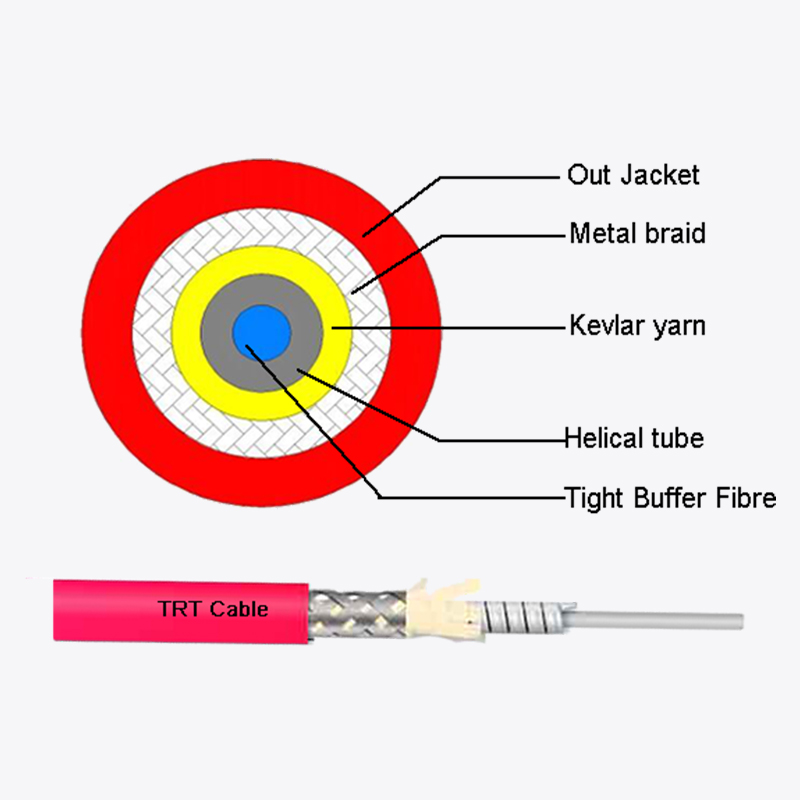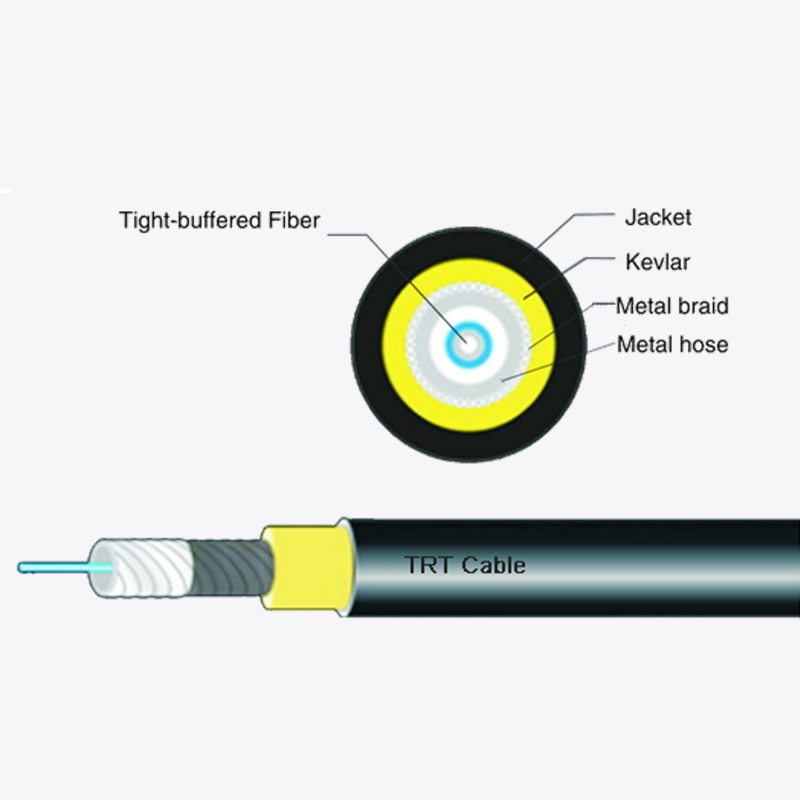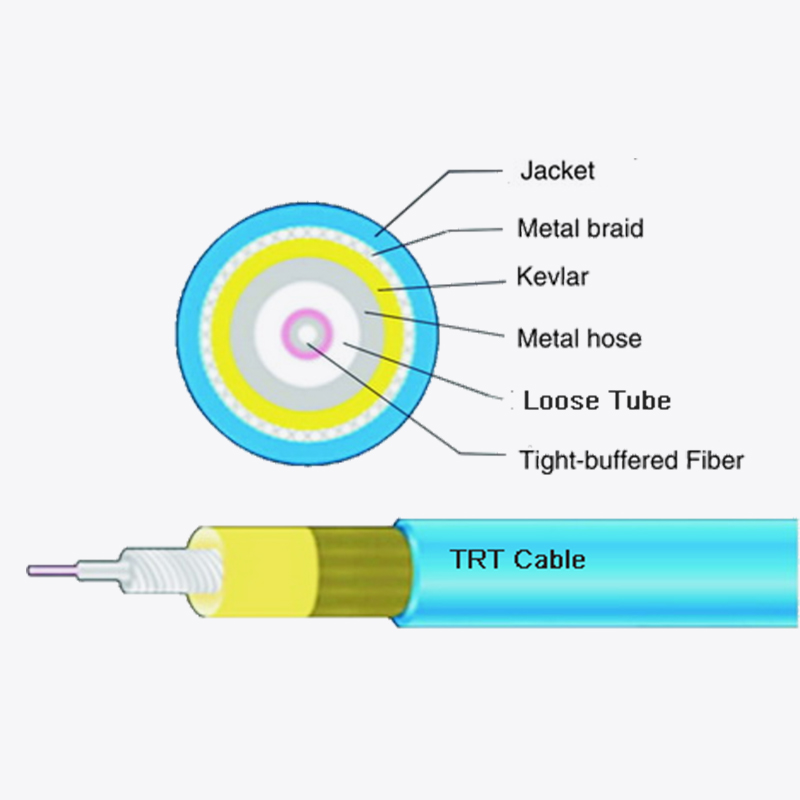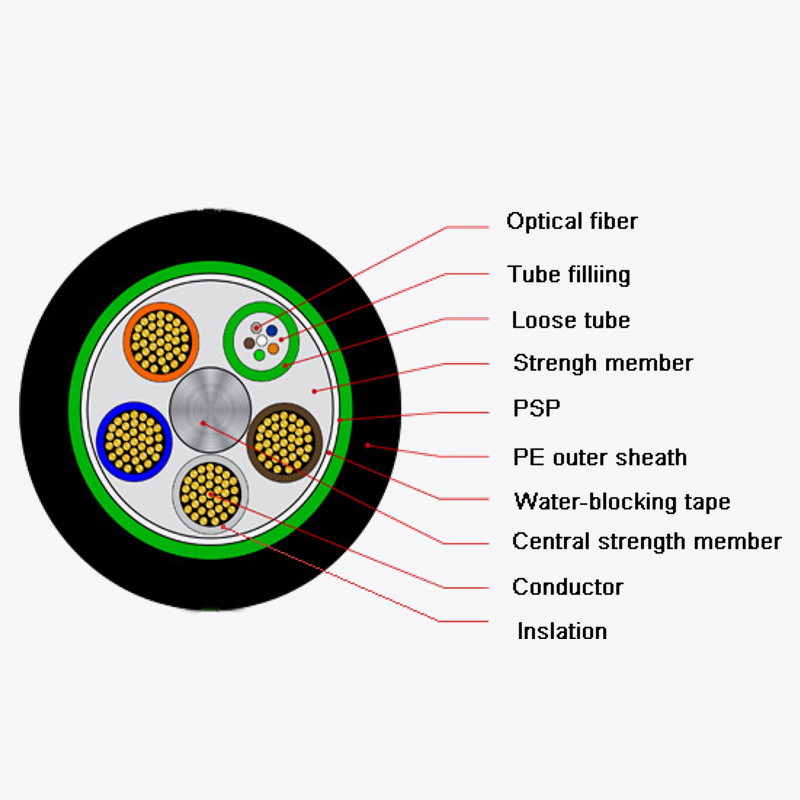Web Menu
Product Search
Exit Menu
What types of connectors are compatible with Zipcord Interconnect fiber optic cable GJFJB?
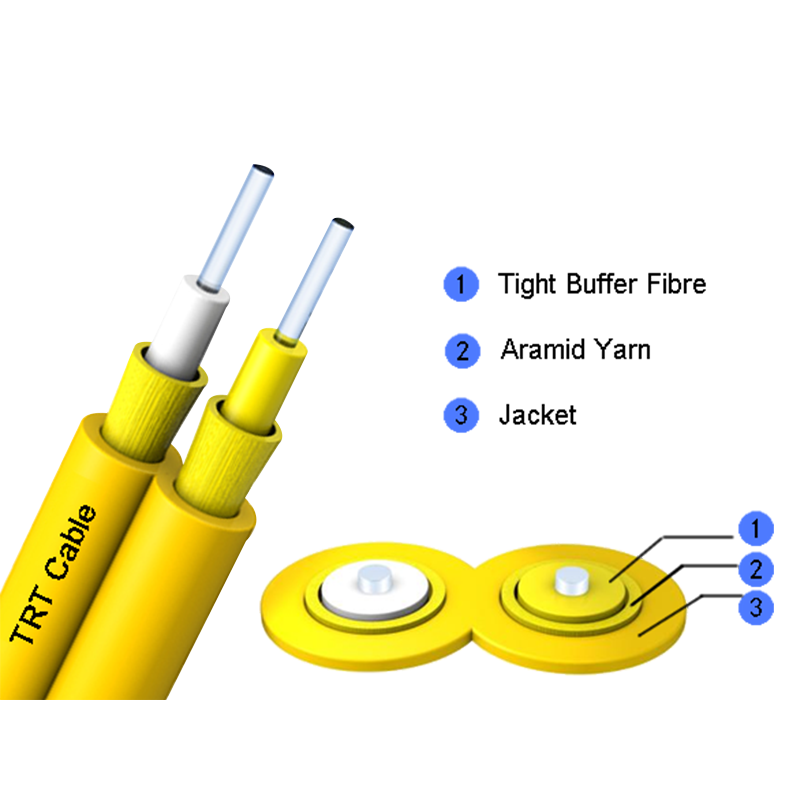
What types of connectors are compatible with Zipcord Interconnect fiber optic cable GJFJB?
Overview of Zipcord Interconnect fiber optic cable GJFJB
Zipcord Interconnect fiber optic cable GJFJB is a dual-fiber optical cable known for its compact design, ease of handling, and versatility in both indoor and controlled outdoor applications. Its structure typically consists of two optical fibers encased within a common jacket, enabling simultaneous transmission and reception of optical signals. The cable is especially suitable for short-distance interconnects, patching, and equipment linking in telecommunication networks, data centers, and enterprise environments.
Due to its flexible nature, Zipcord Interconnect fiber optic cable GJFJB supports a range of connector types. Choosing the appropriate connector is crucial for maintaining signal integrity, minimizing insertion loss, and ensuring long-term operational reliability.
Key considerations for connector compatibility
When selecting connectors for Zipcord Interconnect fiber optic cable GJFJB, several critical factors should be considered:
- Fiber type: Zipcord cables may contain single-mode or multi-mode fibers. Connector choice must match the fiber’s optical characteristics to prevent signal degradation.
- Connector size and geometry: The compact design of Zipcord cables requires connectors that accommodate small diameters while ensuring secure termination.
- Performance requirements: Factors such as insertion loss, return loss, and durability influence the compatibility of connectors.
- Application environment: Indoor vs. outdoor use, exposure to mechanical stress, and environmental conditions impact the type of connector suitable for the cable.
Common connector types compatible with Zipcord Interconnect fiber optic cable GJFJB
LC connectors
LC connectors are widely used with Zipcord Interconnect fiber optic cable GJFJB due to their small form factor and reliable performance. These connectors feature a push-pull design, which simplifies installation and removal in tight spaces. LC connectors are compatible with both single-mode and multi-mode fibers and provide low insertion loss and high-density connectivity, making them ideal for data centers and telecom racks. Their compact size allows multiple LC connections within a limited panel space, which is particularly valuable for high-density applications.
SC connectors
SC connectors are another commonly compatible option. They use a simple push-pull coupling mechanism, providing stable and repeatable performance. SC connectors are suitable for Zipcord Interconnect fiber optic cable GJFJB in enterprise networking applications, offering low insertion loss and consistent optical performance. SC connectors are especially advantageous in environments where frequent patching or reconfiguration is required due to their ease of handling.
ST connectors
ST connectors, characterized by a bayonet-style twist lock, are compatible with Zipcord Interconnect fiber optic cable GJFJB when a durable, mechanically stable connection is needed. ST connectors are often used in industrial and campus networks, providing reliable alignment of fibers and resistance to vibration and accidental disconnection. Although slightly larger than LC and SC connectors, ST connectors remain a practical choice for applications that require robust physical connections.
MTP/MPO connectors
For specialized high-density deployments, MTP or MPO connectors can be used in conjunction with Zipcord Interconnect fiber optic cable GJFJB when aggregated connections are needed. These multi-fiber connectors support rapid deployment and high bandwidth transmission, especially in data centers and backbone network infrastructure. While MTP/MPO connectors are more common in ribbonized fiber cables, they can be adapted for use with Zipcord cables through hybrid or breakout assemblies.
FC connectors
FC connectors are compatible with Zipcord Interconnect fiber optic cable GJFJB in applications that prioritize high precision and low signal loss. FC connectors use a screw-on mechanism, ensuring a secure connection that minimizes microbending and insertion loss. These connectors are often used in measurement instruments, laboratory setups, and high-performance telecommunication equipment.
Installation and termination considerations
Proper installation of connectors on Zipcord Interconnect fiber optic cable GJFJB is crucial for optimal performance. Several best practices should be observed:
- Cable preparation: Stripping the jacket, coating, and cladding carefully is essential to prevent damage to the fiber cores.
- Cleaning: Optical surfaces should be cleaned using specialized fiber cleaning tools to remove dust or debris that could affect signal transmission.
- Termination technique: Whether using pre-terminated connectors or field-installable connectors, proper alignment and secure fastening are critical to maintain low insertion loss and high return loss.
- Testing: After installation, testing for continuity, optical loss, and connector integrity ensures that the connection meets design specifications.
Advantages of using compatible connectors with Zipcord Interconnect fiber optic cable GJFJB
Using the correct connector type provides several advantages:
- Minimized signal loss: Compatible connectors ensure proper alignment of fiber cores, reducing attenuation.
- Enhanced reliability: Secure connections prevent accidental disconnections and physical damage.
- Flexibility in deployment: Choosing from LC, SC, ST, FC, or MTP connectors allows Zipcord Interconnect fiber optic cable GJFJB to adapt to various network configurations.
- Simplified maintenance: Standardized connectors make it easier to replace or reconfigure connections without specialized tools.
Application scenarios for connector usage
Data centers
In data centers, high-density LC or MTP connectors are preferred for Zipcord Interconnect fiber optic cable GJFJB to support dense server racks and patch panels. The connectors enable fast deployment and reliable high-speed connections, which are essential for critical IT infrastructure.
Enterprise networks
For enterprise networking environments, SC and LC connectors are commonly selected. They provide consistent performance, ease of installation, and cost-effectiveness, making them suitable for office wiring, backbone connections, and interbuilding links.
Industrial networks
ST and FC connectors are often deployed with Zipcord Interconnect fiber optic cable GJFJB in industrial settings where mechanical stability and environmental resistance are required. These connectors provide secure connections in areas exposed to vibration, dust, or temperature fluctuations.
Telecommunication networks
Telecommunication networks demand connectors that ensure minimal insertion loss and high signal fidelity. LC and SC connectors are widely used in telecom equipment rooms and central offices to link switches, routers, and optical distribution frames.
Maintenance and inspection practices
Maintaining the performance of connectors on Zipcord Interconnect fiber optic cable GJFJB involves routine inspection and cleaning:
- Visual inspection: Regularly check for visible dirt, scratches, or damage on connector ferrules.
- Cleaning protocols: Use lint-free wipes and approved cleaning solutions to remove contaminants.
- Performance testing: Conduct periodic optical loss measurements to verify that connectors maintain expected signal transmission levels.
- Replacement guidelines: Connectors showing wear, persistent contamination, or repeated signal issues should be replaced to maintain network reliability.
Industry standards and compliance
Connectors compatible with Zipcord Interconnect fiber optic cable GJFJB are typically designed according to international standards, ensuring interoperability and performance consistency. Key standards include:
| Standard | Purpose |
|---|---|
| IEC 61754 | Defines connector interfaces for fiber optic components |
| TIA/EIA-604 | Series of fiber optic connector standards (FOCIS) |
| ISO/IEC 11801 | Specifies generic cabling standards for optical fiber |
Compliance with these standards ensures that Zipcord Interconnect fiber optic cable GJFJB and its connectors operate effectively across different network environments and vendor equipment.
Future considerations and trends
As network demands increase, the compatibility of Zipcord Interconnect fiber optic cable GJFJB with various connector types will continue to evolve. Emerging trends include:
- High-density patching solutions that maximize port usage in data centers.
- Improved low-loss connector designs for long-term network reliability.
- Simplified field-installable connectors that reduce installation time and errors.
- Enhanced environmental resistance to support outdoor and industrial applications.
These advancements highlight the ongoing importance of selecting appropriate connectors that align with both current and future network requirements.
Conclusion
Understanding what types of connectors are compatible with Zipcord Interconnect fiber optic cable GJFJB is critical for ensuring efficient network performance, reliability, and scalability. Common connectors such as LC, SC, ST, FC, and MTP/MPO provide diverse options depending on application needs, fiber type, and deployment environment. Proper installation, maintenance, and adherence to industry standards further enhance the performance of Zipcord Interconnect fiber optic cable GJFJB, ensuring that networks operate smoothly and effectively in a range of professional settings.
 Address:Zhong'an Road, Puzhuang Town, Suzhou City, Jiangsu Prov., China
Address:Zhong'an Road, Puzhuang Town, Suzhou City, Jiangsu Prov., China Phone:+86-189 1350 1815
Phone:+86-189 1350 1815 Tel:+86-512-66392923
Tel:+86-512-66392923 Fax:+86-512-66383830
Fax:+86-512-66383830 Email:[email protected]
Email:[email protected] Wechat: xiaobin18913501815
Wechat: xiaobin18913501815 whatsapp: +86 18913501815
whatsapp: +86 18913501815
 0
0

 English
English русский
русский Español
Español Português
Português عربى
عربى